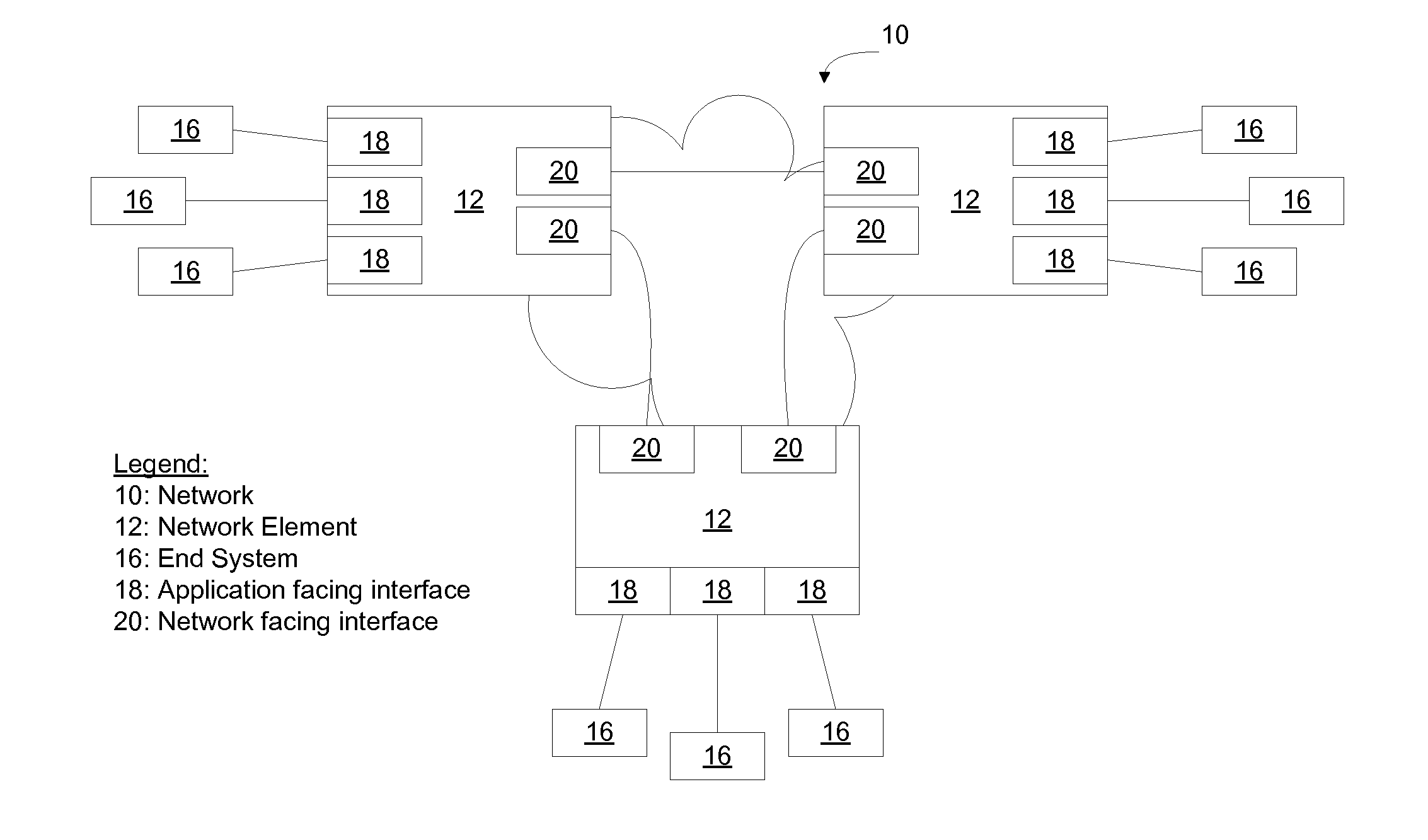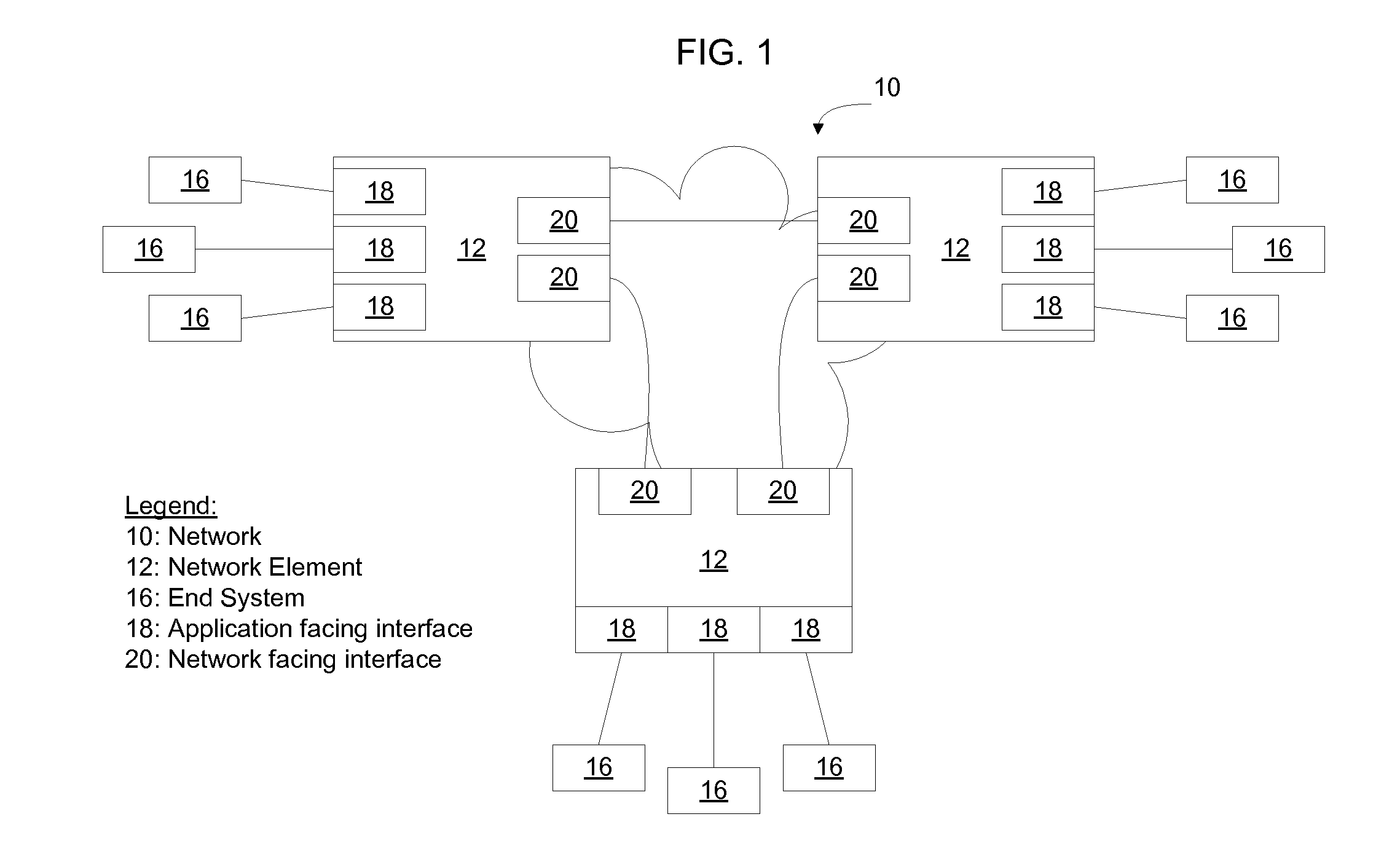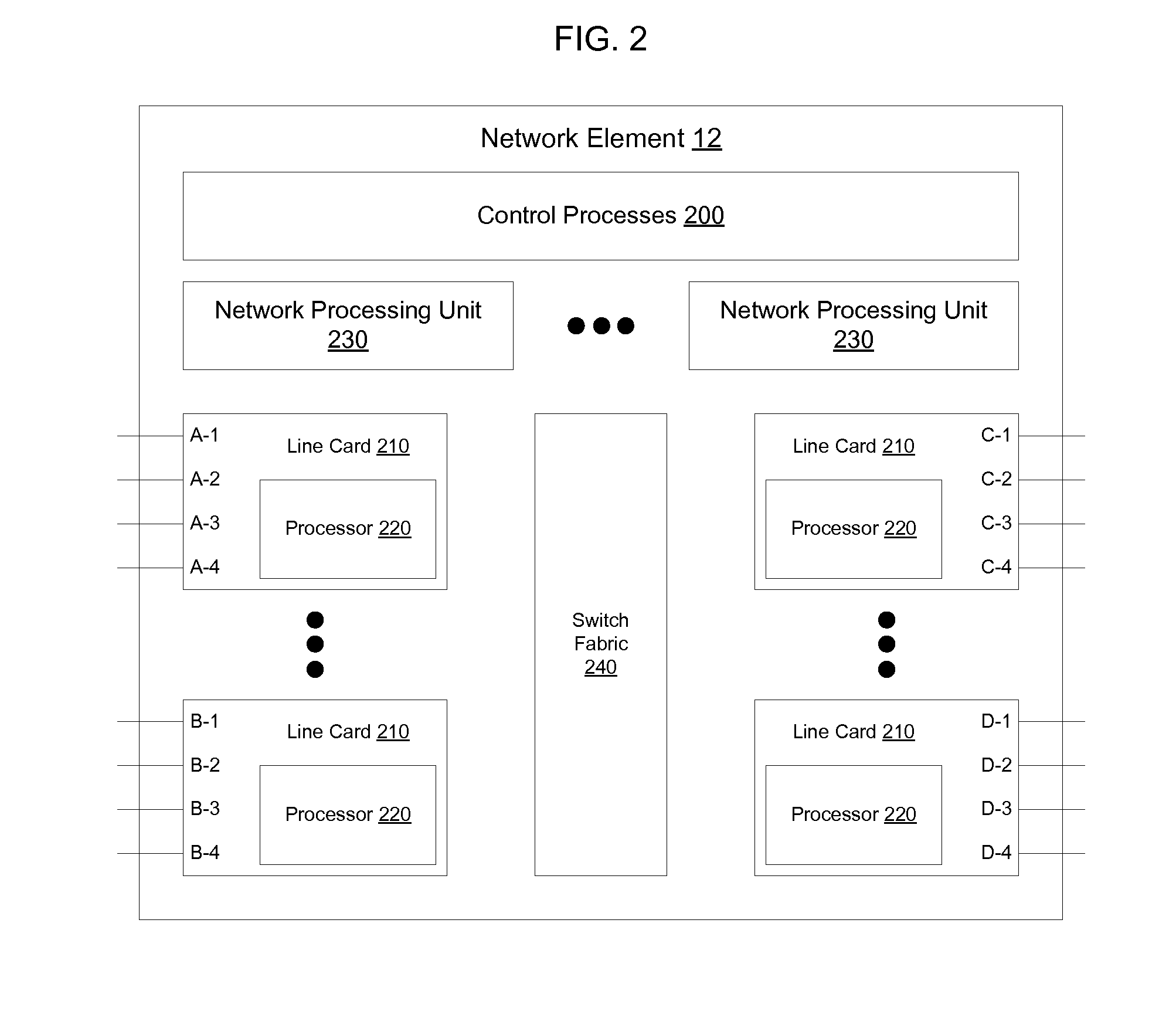Method for Mapping Packets to Network Virtualization Instances
a virtualization instance and packet technology, applied in the field of communication networks, can solve the problems of increasing the delay in implementing a forwarding decision, increasing the latency associated with packet forwarding, and expensive design of network elements to keep the state of this natur
- Summary
- Abstract
- Description
- Claims
- Application Information
AI Technical Summary
Benefits of technology
Problems solved by technology
Method used
Image
Examples
Embodiment Construction
[0018]The following detailed description sets forth numerous specific details to provide a thorough understanding of the invention. However, those skilled in the art will appreciate that the invention may be practiced without these specific details. In other instances, well-known methods, procedures, components, protocols, algorithms, and circuits have not been described in detail so as not to obscure the invention.
[0019]FIG. 1 illustrates an example of a network 10 in which a plurality of network elements 12 such as switches and routers are interconnected to transmit packets of data. Network elements 12 receive packets from end systems 16, process the packets, and forward packets of data toward their destination on the network. End systems 16 include computers (FIG. 3), servers (FIG. 4), or other packet sources. An example network element 12 is discussed in greater detail below in connection with FIG. 2.
[0020]Network elements 12, in one embodiment, are access devices configured to ...
PUM
 Login to View More
Login to View More Abstract
Description
Claims
Application Information
 Login to View More
Login to View More - R&D
- Intellectual Property
- Life Sciences
- Materials
- Tech Scout
- Unparalleled Data Quality
- Higher Quality Content
- 60% Fewer Hallucinations
Browse by: Latest US Patents, China's latest patents, Technical Efficacy Thesaurus, Application Domain, Technology Topic, Popular Technical Reports.
© 2025 PatSnap. All rights reserved.Legal|Privacy policy|Modern Slavery Act Transparency Statement|Sitemap|About US| Contact US: help@patsnap.com



